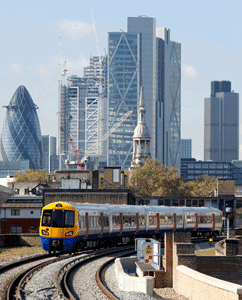How to cut the cost of new trains
Posted: 1 June 2011 | | No comments yet
Huge cost savings could be made when Britain buys its next generations of trains if the rail industry works together even more closely to design and procure them…


Huge cost savings could be made when Britain buys its next generations of trains if the rail industry works together even more closely to design and procure them, a Network Rail report reveals. The report draws on months of work of all key players in the rail industry, including train operators, government, manufacturers, rolling stock leasing companies, passenger representatives and passenger transport executives.


By reducing the number of different types of trains and by phasing orders over time, potentially hundreds of millions of pounds could be saved.
The Network route utilisation strategy (RUS) – passenger rolling stock – draft for consultation, states that by reducing the number of different types of trains and by phasing orders over time, potentially hundreds of millions of pounds could be saved. This approach parallels recommendations made by the government’s recent rail value for money study, chaired by Sir Roy McNulty.
The draft RUS recommends the rail industry should:
- Exploit the economies of scale in procurement wherever feasible
- Meet the needs of passengers and each market sector when ordering rolling stock
- Consider those infrastructure works needed to allow the rolling stock to be interoperable within the market sector it serves
- Consider the phasing of future rolling stock procurement and infrastructure planning, including the potential for extending the life of existing vehicles;
Paul Plummer, Network Rail director, planning and development said: “The rail industry must cut its costs and it is clear that the prize of big savings is on our reach if we work more closely together. The design and procurement of the next generations of trains is an area where we can demonstrate this.
“Simplicity and inter-operability must be the key to value for money in train procurement. Train operators must play their vital role in specifying train design along with Network Rail’s role in specifying to achieve lower whole-life infrastructure costs.
“The rail industry has just launched the new Rail Delivery Group to drive through greater efficiencies. This group will take the lead on the changes we need to make, so that passengers in the future will not only have better trains, but better value ones too.”
The draft RUS also shows:
- Passenger rolling stock costs are currently £1.8bn per year – 15% of the railways annual running costs
- There are now 12,000 vehicles on the GB rail network today, divided into 64 different rolling stock classes
- 5,000 new vehicles have been introduced to the network since 1996
- The average cost per vehicle, according to the Competition Commission is £1.1m
- Owing to the plethora of different vehicle designs 8% (£75m) of average procurement costs is on non-recurring costs associated with the development of bespoke rolling stock
- 20% of procurement costs could have been saved between 1988 and 2010 if there had been continuity of orders


